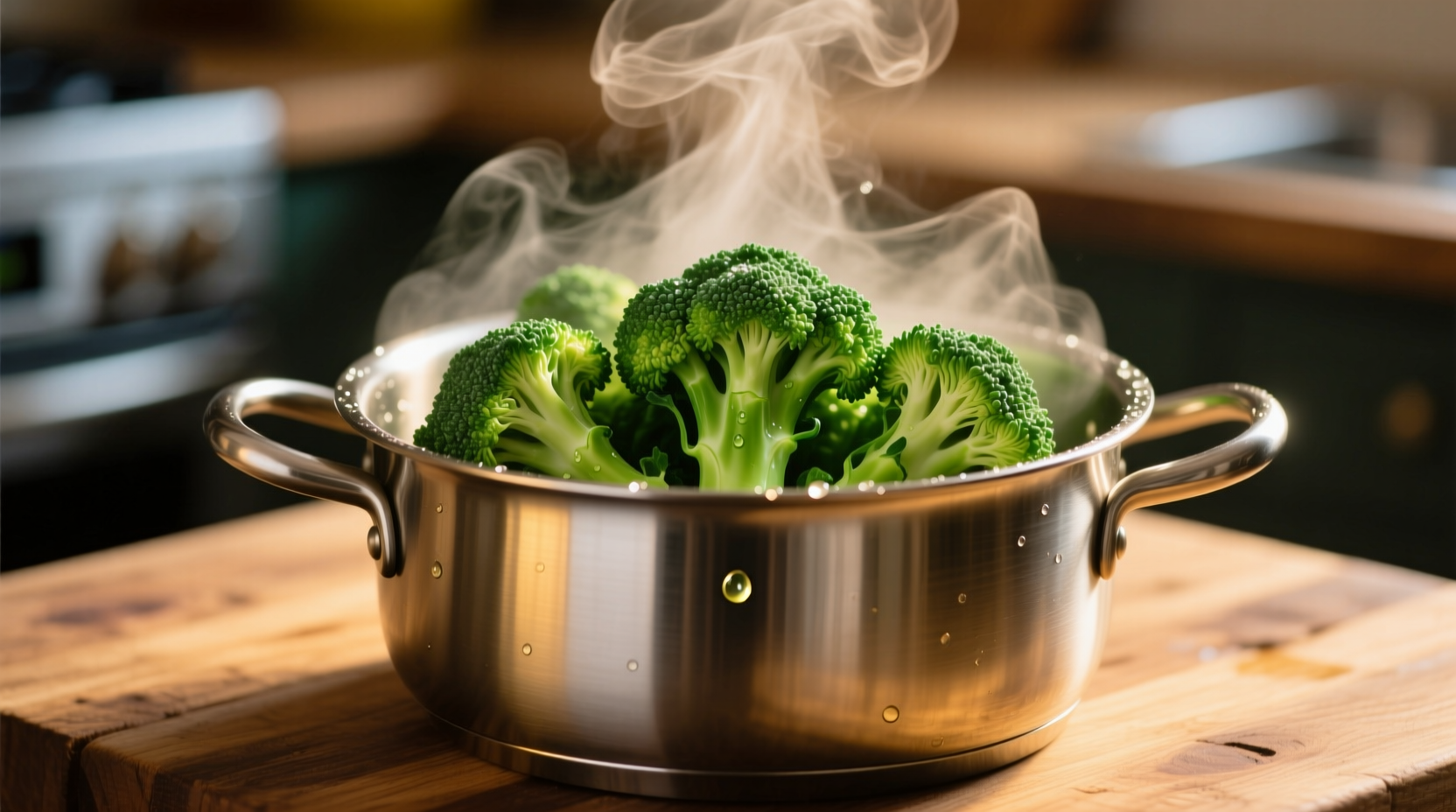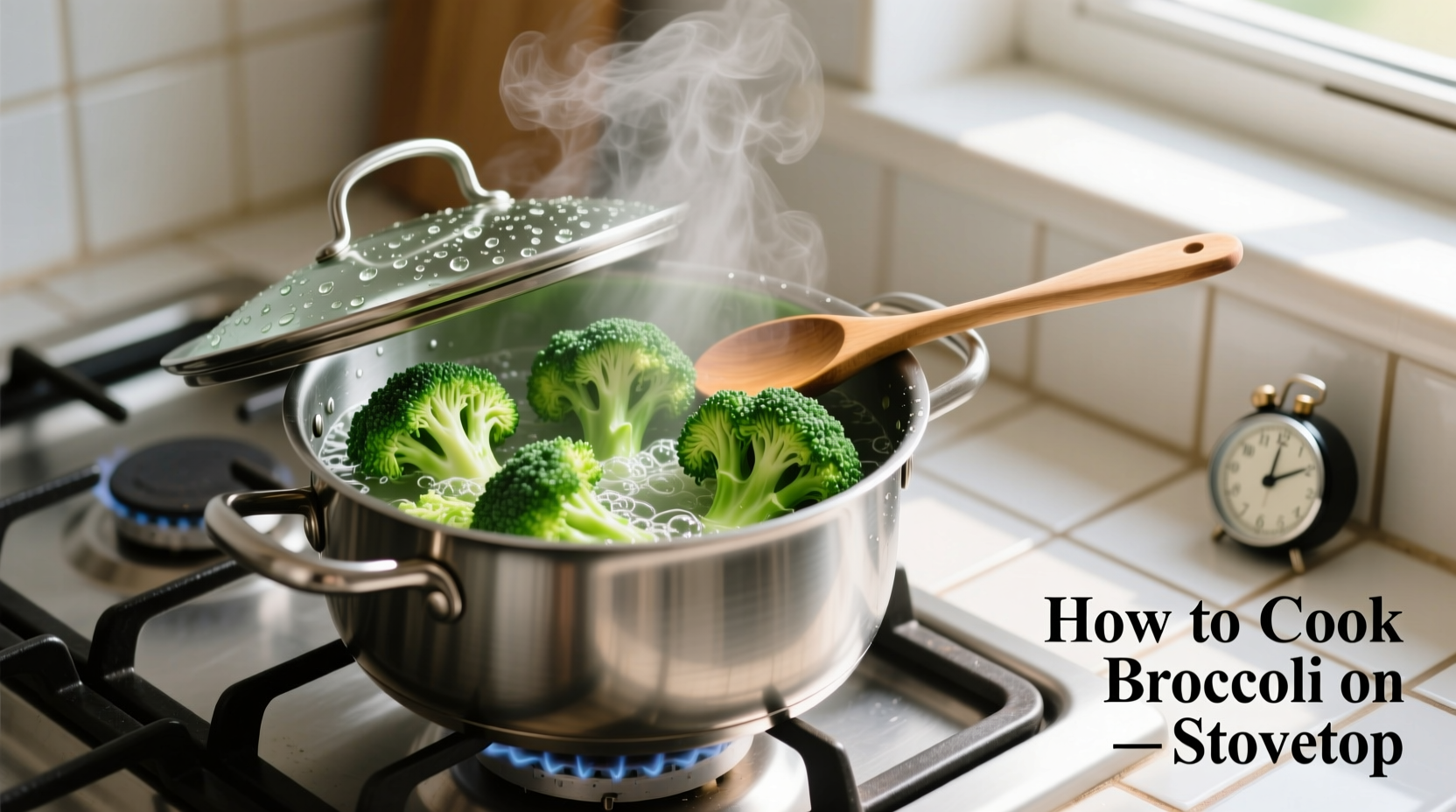Perfectly cooked stovetop broccoli takes just 5-7 minutes to achieve vibrant color, crisp-tender texture, and maximum nutrient retention. This simple method requires only a pot, water or broth, and your fresh broccoli florets.
The Ultimate Guide to Cooking Broccoli on Stovetop
Many home cooks struggle with soggy, overcooked broccoli that loses both flavor and nutritional value. Mastering stovetop broccoli cooking ensures you get restaurant-quality results every time with minimal equipment and effort. Whether you're meal prepping or creating a quick side dish, this technique delivers consistent results that preserve broccoli's natural crunch and vibrant green color.
Why Stovetop Cooking Works Best for Broccoli
While steaming and roasting have their place, stovetop boiling or blanching offers unique advantages for broccoli preparation. This method provides precise temperature control and consistent results that other techniques can't match for certain applications. According to culinary research from the USDA Food Safety and Inspection Service, water-based cooking methods like boiling help preserve broccoli's vitamin C content better than dry-heat methods when properly executed.
| Cooking Method | Time Required | Texture Result | Nutrient Retention |
|---|---|---|---|
| Stovetop Boiling | 5-7 minutes | Crisp-tender | High (with proper timing) |
| Steaming | 6-8 minutes | Firm-crisp | Very high |
| Roasting | 15-20 minutes | Caramelized edges | Moderate |
| Microwaving | 4-6 minutes | Variable | Moderate to high |
Essential Equipment Checklist
Before you begin, gather these simple kitchen tools:
- Medium-sized saucepan with lid (3-4 quart capacity)
- Colander or strainer
- Sharp chef's knife
- Cutting board
- Timer (critical for perfect results)
- Tongs or slotted spoon
Step-by-Step Cooking Process
Preparation Phase: Setting Up for Success
Proper preparation makes all the difference in your final result. Start with fresh broccoli that has tight florets and firm stalks. Rinse thoroughly under cold water, then cut into uniform 1½-inch pieces. Keeping pieces consistent ensures even cooking—smaller florets cook faster than larger ones.
For optimal flavor development, separate the stalks from the florets. Peel the tough outer layer of the stalks with a vegetable peeler and cut them into smaller pieces than the florets since they require slightly longer cooking time. This professional technique prevents either part from becoming overcooked.
Cooking Phase: The Critical 7 Minutes

Follow these precise steps for perfect stovetop broccoli:
- Fill your saucepan with 1-2 inches of water (enough to partially submerge broccoli)
- Add 1 teaspoon salt to the water (enhances flavor and helps maintain color)
- Bring water to a rolling boil over high heat
- First add broccoli stalks and cook for 1 minute
- Add florets and return to boil
- Set timer immediately for 5-7 minutes (6 minutes is ideal for most)
- Test for doneness at 5 minutes by piercing a floret with a fork
- Drain immediately when crisp-tender (don't overcook!)
The American Heart Association recommends retaining some firmness in vegetables to maximize fiber content and nutrient preservation. Overcooking broccoli not only diminishes texture but also reduces its glucosinolate compounds, which provide significant health benefits.
Finishing Touches: Elevating Your Broccoli
Immediately after draining, transfer broccoli to a serving dish and add your finishing touches while it's still hot:
- Drizzle with 1 teaspoon lemon juice or zest for brightness
- Sprinkle with toasted almonds or pine nuts for crunch
- Add a pinch of red pepper flakes for subtle heat
- Toss with ½ tablespoon olive oil or melted butter
For restaurant-quality presentation, professional chefs recommend the "shock and serve" technique: plunge cooked broccoli into ice water for 30 seconds to stop cooking, then drain thoroughly and finish with your preferred seasonings. This method preserves the vibrant green color and creates a more refined texture.
Avoiding Common Mistakes
Even experienced cooks make these broccoli preparation errors:
- Overcrowding the pot - Cook in batches if necessary to maintain proper water temperature
- Adding salt too early - Wait until water reaches boiling point before salting
- Guessing cooking time - Always use a timer; visual cues alone aren't reliable
- Letting broccoli sit in hot water - Drain immediately when done to prevent carryover cooking
When Stovetop Broccoli Works Best (and When It Doesn't)
Understanding context boundaries helps you choose the right cooking method. Stovetop boiling excels for:
- Quick weeknight side dishes
- Recipes requiring partially cooked broccoli (like casseroles)
- Situations where minimal equipment is available
Consider alternative methods when:
- You want caramelized flavor (roast instead)
- Maximizing nutrient retention is your top priority (steam instead)
- Preparing large quantities for meal prep (steam in batches)
Serving and Storage Guidelines
For best flavor, serve immediately after cooking. If you must hold broccoli before serving, spread it in a single layer on a baking sheet rather than stacking in a bowl, which creates steam and leads to overcooking.
Store leftovers in an airtight container in the refrigerator for up to 3 days. Reheat gently in a skillet with a splash of water rather than microwaving to maintain texture. Avoid reheating more than once for optimal quality and food safety.











 浙公网安备
33010002000092号
浙公网安备
33010002000092号 浙B2-20120091-4
浙B2-20120091-4